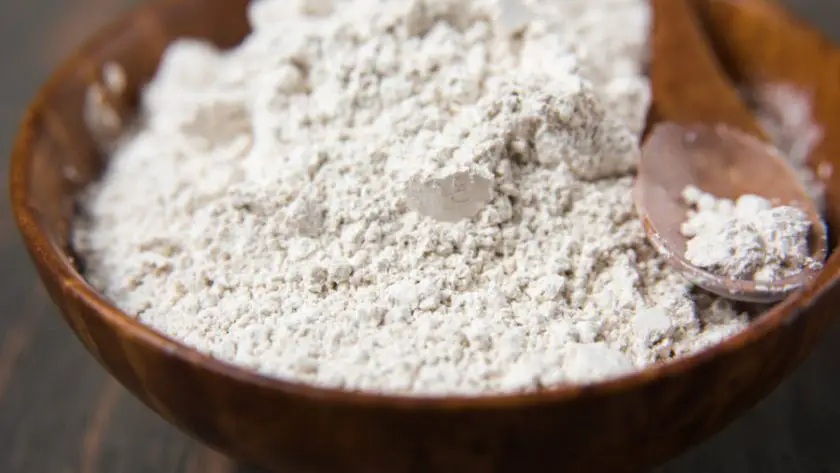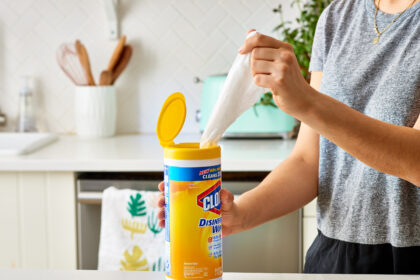Many years ago when I was first getting into health I remember discovering the many variations of salts and clays. I experimented with at the time Himalayan salt and other specialty salts that had different mineral profiles, it was a fun time to explore and learn about health.
When I discovered that clay had benefits for health in an internal manner beyond an external topical application I was intrigued.
Clay happens to contain an interesting nutritional profile mostly composed of a variety of minerals. Some clays are richer in minerals than others, and some clays have very high levels of key minerals that we need for health.
I started experimenting with bentonite clay but I was particularly intrigued when I found a clay known as diatamaceous earth, particularly the food grade version which means its safe for human consumption.
A health expert that I was following online at the time shared how this clay helped to quite literally attack parasites in the human body, and that this clay was sharp and when it came into contact with the parasites it would cut them in half.
This clay has been used by farmers and ranchers to ensure that their livestock do not get certain parasites.
According to the web, if you do a quick Google search it says that there is no proof, yet farmers and ranchers have been using this method successfully for many years in order to keep parasites at bay.
How Do You Use Diatomaceous Earth?
Diatomaceous Earth can help eliminate parasites such as roundworms, whipworms, pinworms, and hookworms within seven days when included in a daily diet. To maximize its effectiveness, it is recommended to continue feeding Diatomaceous Earth for at least 30 days. This ensures that newly hatching eggs and worms cycling through the lungs and back to the stomach are also targeted, promoting complete elimination of the parasites.
What Happened When My Grandmother Took Diatomaceous Earth Clay?
Many years ago when my ‘adopted grandmother’ was alive my mom would consult her on natural and holistic health practices as my mom is a holistic practitioner. Whenever my mom would visit her in Georgia or California she would support her with cleansing protocols, nutrition and more.
At one point my mom visited my adopted grandma Diane and my mom recommended to her that she take Diatomaceous earth clay for a health ailment that she was experiencing. At the time Diane had skin pigmentation and after taking this clay for a few weeks or so she had noticed that her skin pigmentation and sun spots (age spots) had practically disappeared.
This is due to the high silica content within diatomaceous earth clay. This mineral is pivotal for the health of our hair, skin and nail health. If you have hair, skin or nail issues this may also be an added benefit that you’ll notice.
Beyond Parasites What Else Does Diatomaceous Earth Clay Do?
In order to answer that question we need to answer the question of what is contained in this clay?
Diatomaceous earth (DE) is composed primarily of the fossilized remains of diatoms, a type of hard-shelled algae. Its mineral composition can vary slightly depending on the source, but it generally consists of:
Primary Composition:
- Silica (SiO₂): 80-90%
Silica is the dominant component and is responsible for the abrasive nature of DE. Silica is an essential mineral for hair, skin and nail health.
Trace Minerals:
- Alumina (Al₂O₃): 2-4%
This is present due to the clay-like material sometimes found with DE deposits. - Iron Oxide (Fe₂O₃): 0.5-2%
Iron gives some diatomaceous earth a reddish hue. - Calcium Oxide (CaO): 0.5-2%
Contributes to the mineral content and adds hardness to the structure. - Magnesium Oxide (MgO): 0.5-1%
Important for structural stability in the diatom’s frustules. - Sodium Oxide (Na₂O) and Potassium Oxide (K₂O): Trace amounts
These minerals are often present in minimal quantities, contributing to the overall chemical profile of DE.
Other Trace Elements:
- Titanium, manganese, and phosphorous are sometimes detected in very small amounts, depending on the source of the deposit.
The high silica content of diatomaceous earth is key to its effectiveness in various uses, including natural pest control, filtration, and as a health supplement in small quantities.
What You Need To Look For When Buying Diatomaceous Earth Clay?
You want to ensure that you’re consuming FOOD GRADE diatomaceous earth clay only. It’s a plus if the bag says ‘food grade’ and ‘Omri listed’ on it. When you see Omri listed on the package think of it as the USDA organic label you see on food or supplements, Omri listed is to agriculture what USDA organic is to food. If you get food grade and Omri listed clay, you should be okay. Start with 1/2 tsp daily and see how it makes you feel.
Interestingly enough, you can buy this at Home Depot. A 4 pound bag is under 10 bucks. Quite the deal if you ask me!
What Helps With Immunity & Parasite Prevention Long term?
I take Radiate 21 for my immunity, gut health and to prevent any pathogens of any kind including but not limited to bacterial, viral, parasitic or fungal infections. The formula contains 21 ingredients for gut health, Lympahtic health and EMF protection from Chinese, Amazonian and Ayurvedic medicine. You can learn more about the anti-parasitic ingredients in the formula by watching the video below:
Visit Radiate21.com to learn more.





